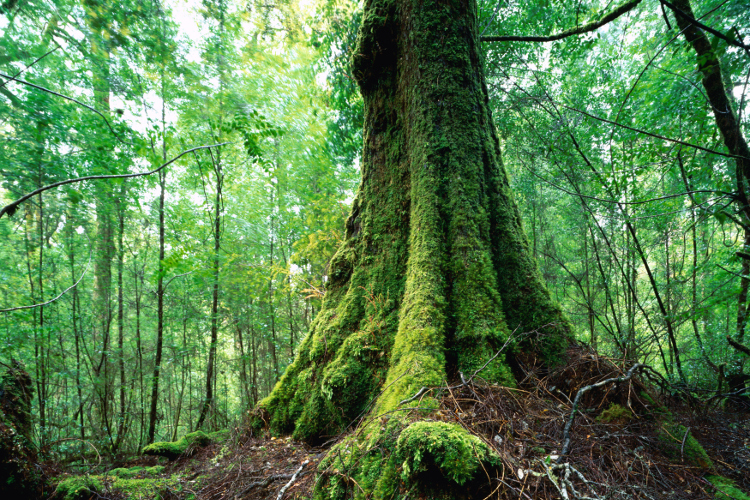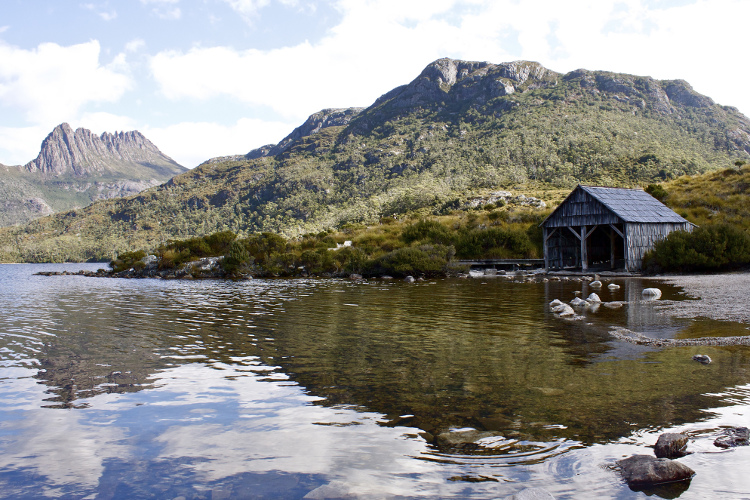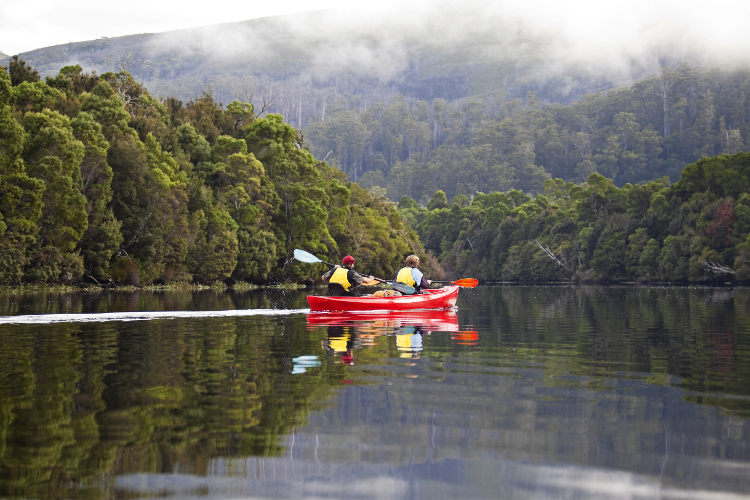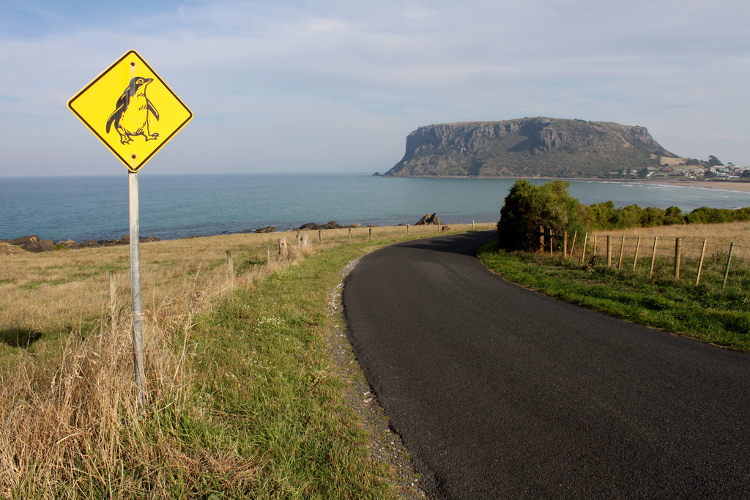
A destination that deserves a place among the pantheon of iconic Aussie attractions, Cradle Mountain National Park combines all that’s good about Tasmania’s open spaces while remaining more accessible than so much of Tasmania’s forested interior. This is the start or finish line for the Great Overland Track, one of Australia’s truly great multi-day hikes. It’s also the trailhead for everything from the day-long Cradle Mountain Summit hike down to boardwalk meanders along forested river valleys. And this is one of Australia’s finest places to see wildlife – wombats proliferate along the Ronny Creek valley and elsewhere just before sunset, sightings of Bennett’s wallabies and pademelons are close to guaranteed, and platypus and Tassie devils are also possible.

It was along the Gordon River (now locked away in the Gordon-Franklin Wild Rivers National Park) that Australia’s love for its wild places came of age in the 1980s when massive protests, helped by a bitter High Court battle, defeated plans to build a dam and flood the forest. That forest and that river – crowded on all sides by dense, dank rainforest foliage, seeded with Huon pines and lent gravitas by the realisation that there are stretches of this wilderness never traversed by human beings – now form the centrepiece of a six-hour boat excursion from the village of Strahan. Other highlights of the journey include a guided tour of Sarah Island (the island’s once-notorious convict prisons now being reclaimed by the trees) and a brief foray out through the narrow Hell’s Gate and into the wild ocean waters known as the Roaring Forties. Gordon River Cruises and World Heritage Cruises both offer this itinerary.
There are many ways to enter the wilderness. One of the more comfortable is the West Coast Wilderness Railway , originally built in the dying days of the nineteenth century to connect the mining town of Queenstown with the outside world (or, more specifically, Strahan, on Tasmania’s west coast). Now, as then, the steam-powered train cuts through the rainforest, traversing gorges and steep-sided river valleys, kept open by a daily crew of workers who clear fallen trees and landslides from the tracks. Aside from being a cracking day trip, this fabulous rail journey is a soulful reminder of one of humankind’s more appealing historical forays into the forest.
Now here’s something special. The tiny former mining settlement of Corinna lies deep in the Tarkine Wilderness along an unpaved gravel road, its old timber buildings huddled on the banks of the Pieman River and surrounded by dense rainforest. In the way of so many remote mining towns, the village died almost a century ago, but in the past decade it has been resurrected as Tasmania’s most accessible wilderness experience. Old mining buildings and modern eco-cottages provide the accommodation, with the old Tarkine Hotel the hub of transient community life. Beyond that, there’s little here, save for walking trails, wildlife and boat trips along the Pieman River aboard the historic wooden Arcadia II.

There are few more remote stretches of gravel in Australia than the 112km-unsealed road that connects Arthur River with Corinna. Known variously as the C249, the Western Explorer Road or the ‘Road to Nowhere’, this deliciously remote route through dense forest and buttongrass plains crosses the Tarkine Wilderness and has the feel of a true adventure, albeit a pretty safe one. Built in the 1990s, the road rewards those who drive carefully – wildlife is abundant and this was the last known habitat of the Thylacine, or Tassie tiger; take care lest it emerges from the bush. A 4WD is recommended, although 2WD vehicles regularly make the two- to three-hour passage.
If your definition of wilderness rules out anywhere reached by road, a number of possibilities present themselves. Tarkine Trails runs six-day rainforest walks with a tented base camp deep in the forest, and another along the coast from Pieman Heads to Sandy Cape. Allowing you to get up close and personal with one of the oldest rainforests on earth, these excursions are for those who always wondered what lies beyond the wall of trees at the rainforest’s edge and don’t mind getting all hot and sweaty to find out. Put simply, these hikes could just be Tasmania’s foremost wilderness immersion experience.
If you were to stand on the Green Point beach at Marrawah facing out into the Southern Ocean, there is every possibility that the air you breathe may not have made landfall since leaving South America two-thirds of the way around the globe. It can be difficult to escape thoughts such as these when the winds pick up and the earth’s immensity threatens to sweep you away. Surfers love this as one of Tasmania’s most reliable breaks, while further south, at Arthur River, a plaque at Gardiner Point marks Tasmania’s official ‘End of the World’.
One of the oldest settlements along Tasmania’s northwest coast, pretty Stanley has historic buildings at every turn. But it’s the setting and sense of possibility that dominates here. A cable car and walking trails climb Circular Head (‘The Nut’ to its friends), a forbidding outcrop that towers over the town. From the summit, cinematic views take in the wild waters of Bass Strait. From back down in the harbour, Stanley Seal Cruises runs informative 75-minute excursions out to Bull Rock, a favoured resting place for Australian fur seals. A rich portfolio of shorebirds, Bottlenose dolphins and even the occasional Great White Shark may also enliven the trip.

Bypassed by the main coastal highway and all the better for it, Penguin is an appealing seaside town strung out along a quiet beach facing onto Bass Strait. And true to its name, Penguin is a base for the Little (or Fairy) Penguins that nightly come ashore along this stretch of coast between mid-September or October and April. The largest breeding colony arrives around sunset at Lalico Beach, 22km east of Penguin; on most nights, there’s a park ranger in residence to answer any questions. Other smaller colonies are found at Sulphur Creek (4km west of Penguin) or on West Beach in Burnie (19km west of Penguin), behind the Makers Workshop. In Penguin itself, large Penguin models line the main street in case you missed the real thing…
Set back from Tasmania’s northwest coast, south of Devonport, Latrobe is widely considered to be the platypus capital of Tasmania. While you can encounter platypus in other Tassie rivers, sightings along the Mersey River at Latrobe’s Warrawee Forest Reserve, just south of town, are elevated to the level of probability, especially close to sunset in spring and summer. You could take your chances and go looking on your own, but trailing along with the experts on the daily tours organised through by the Latrobe Visitor Centre will greatly increase your chances of success.